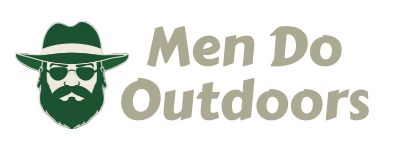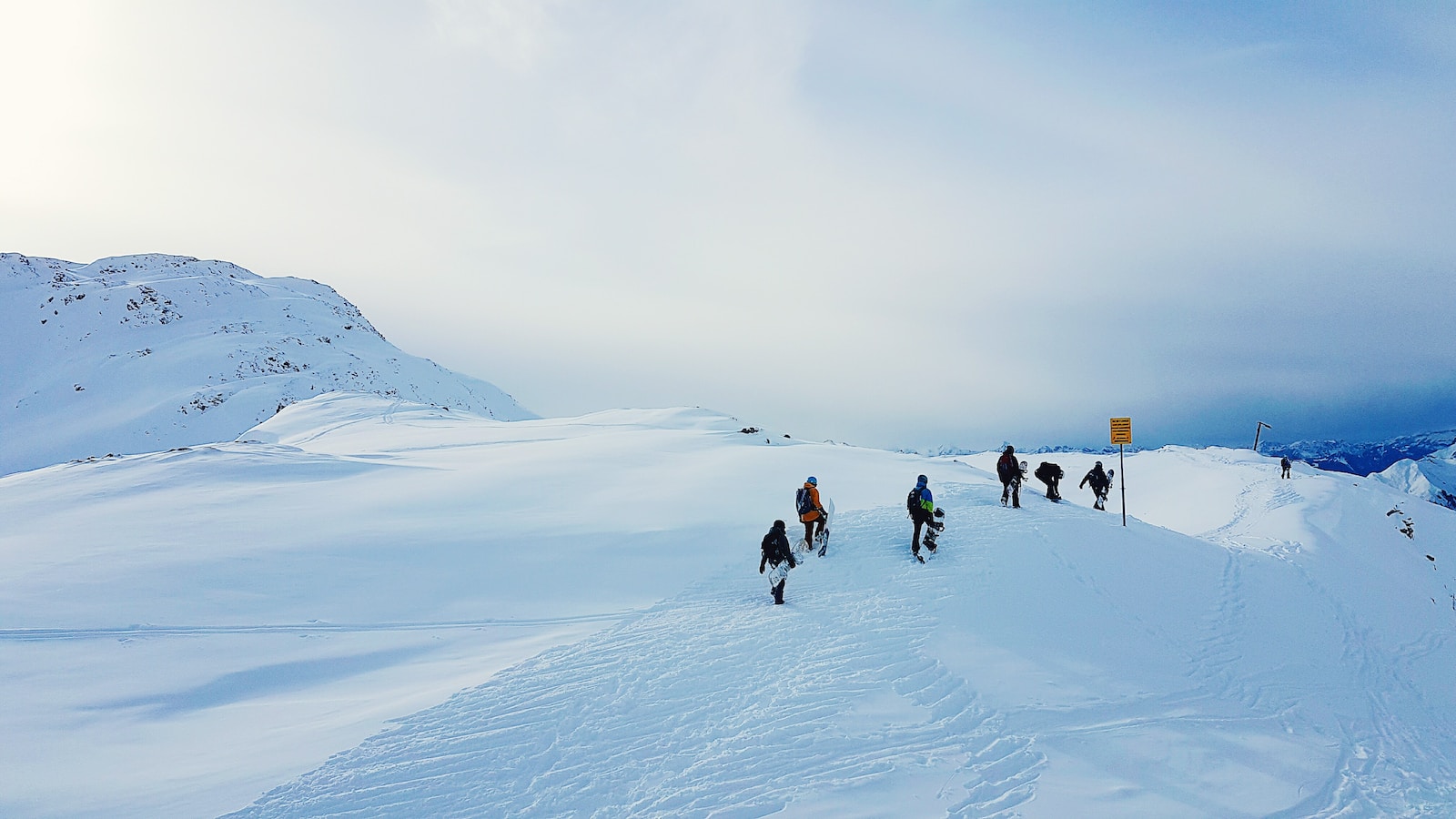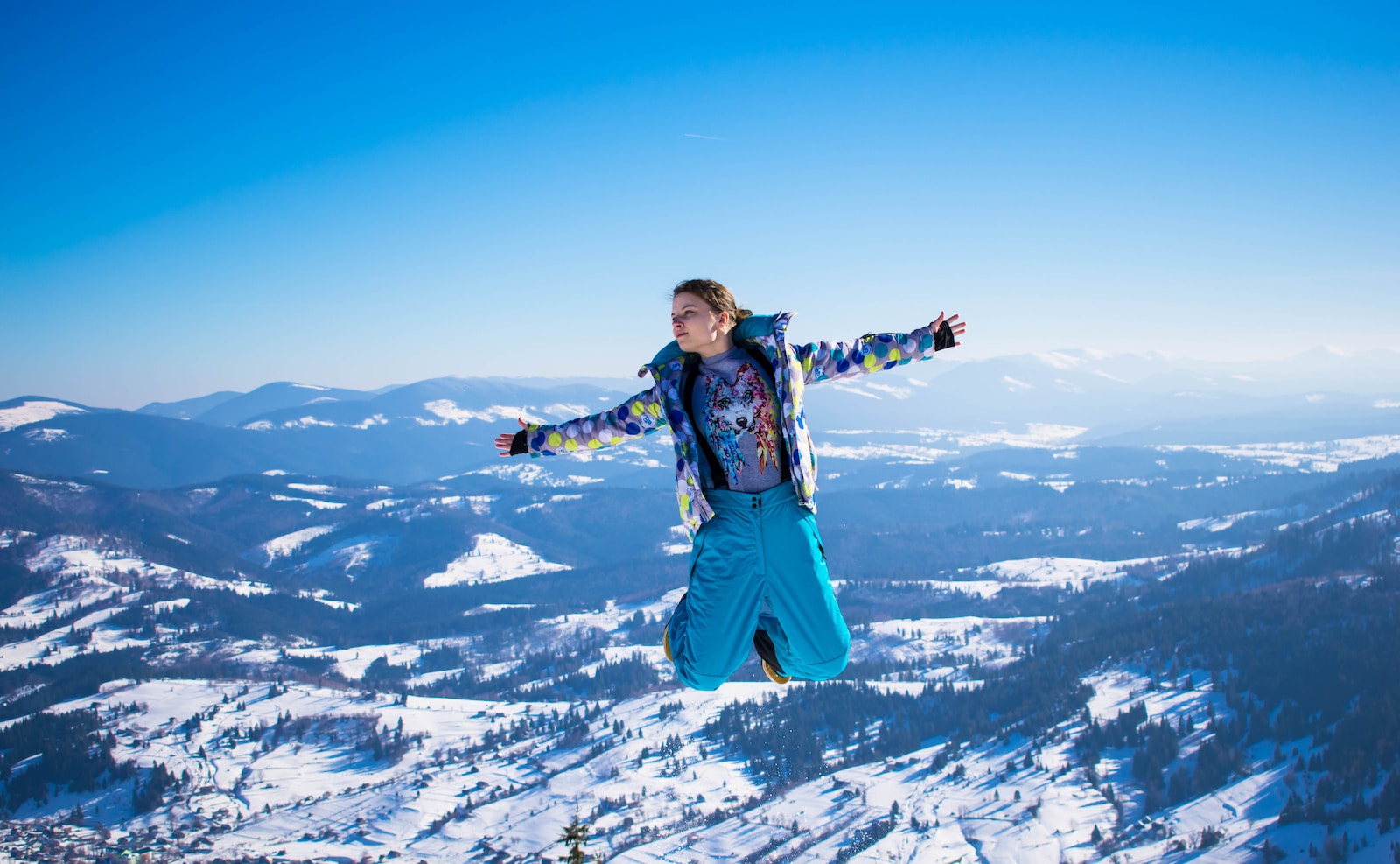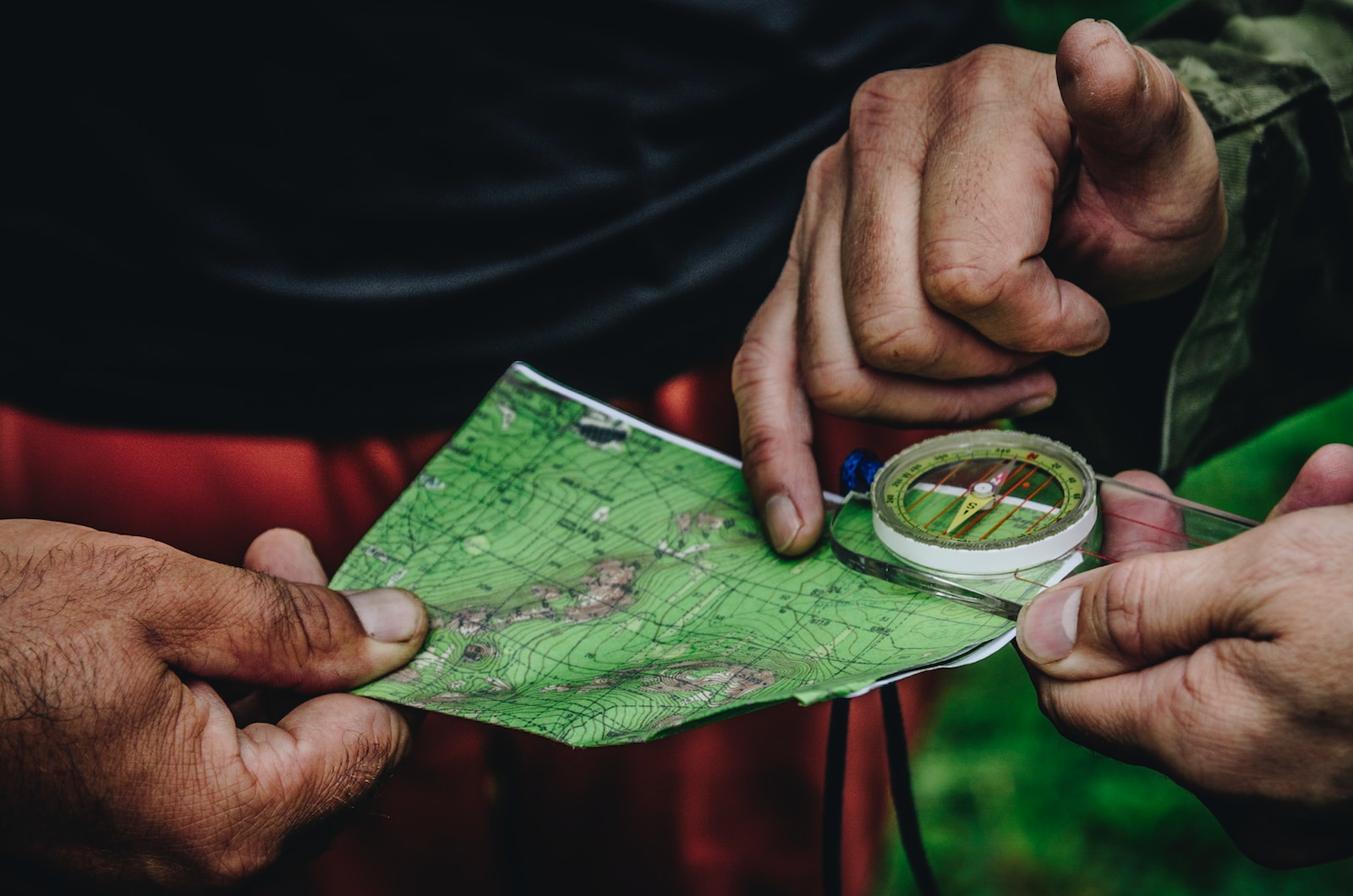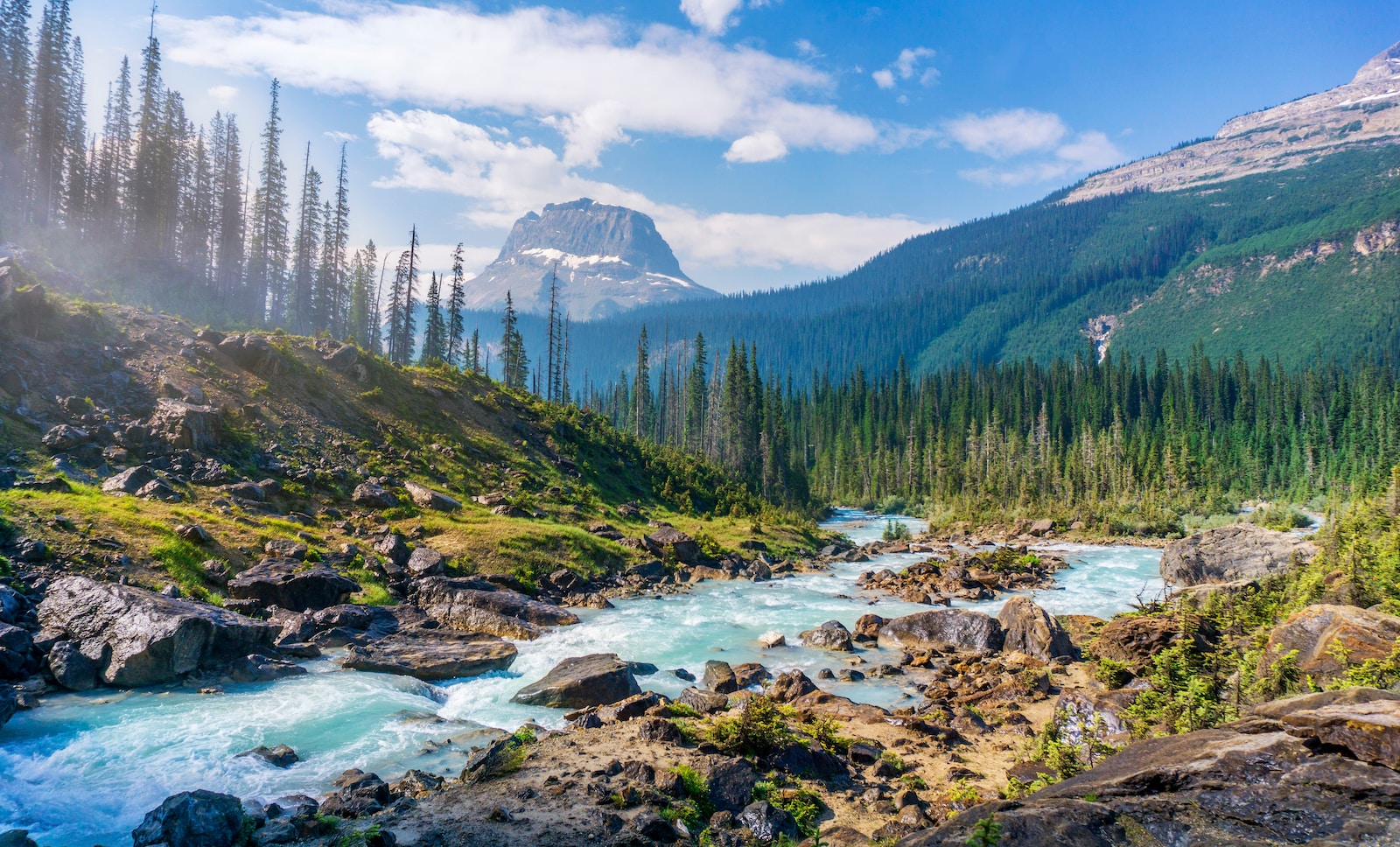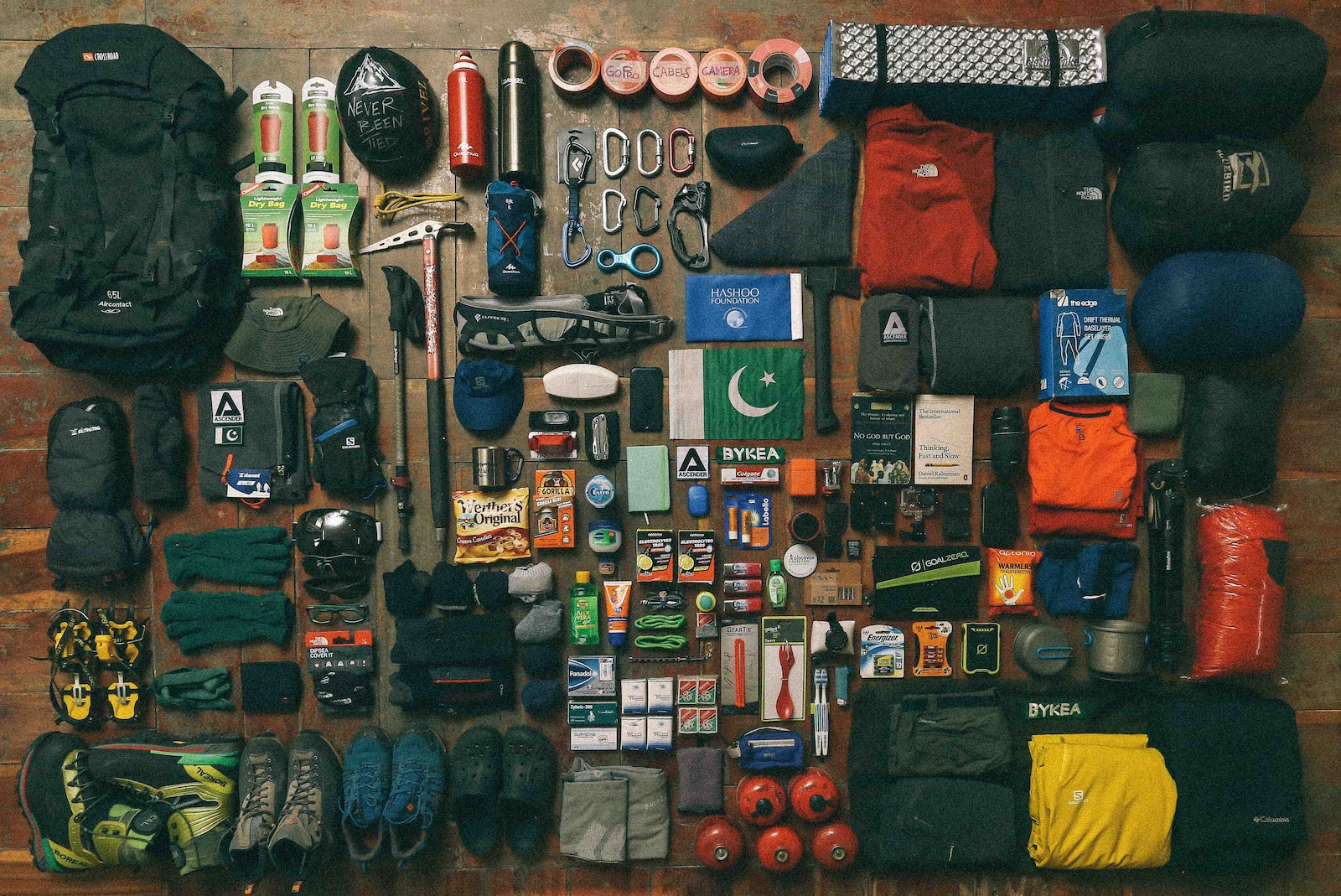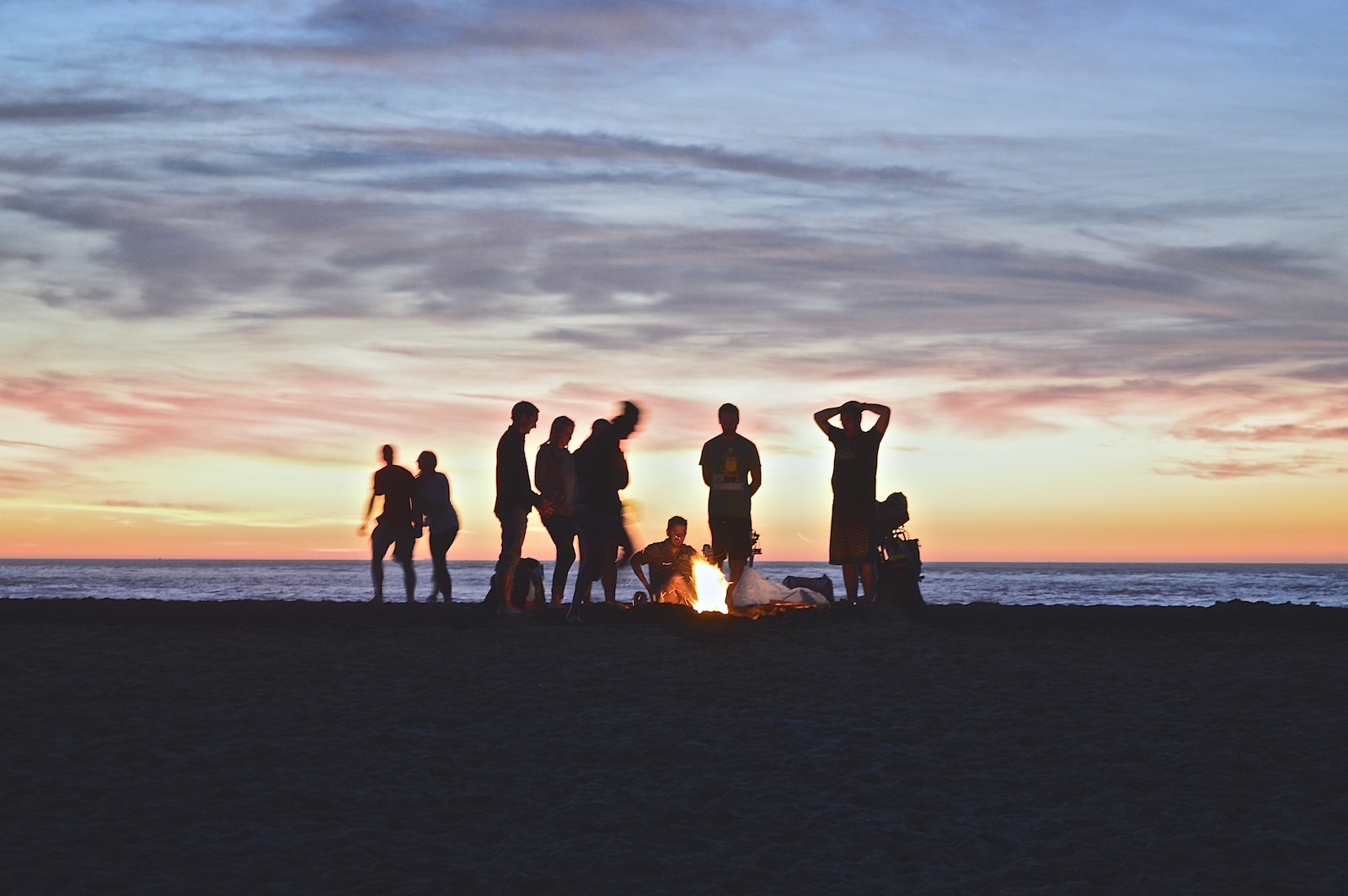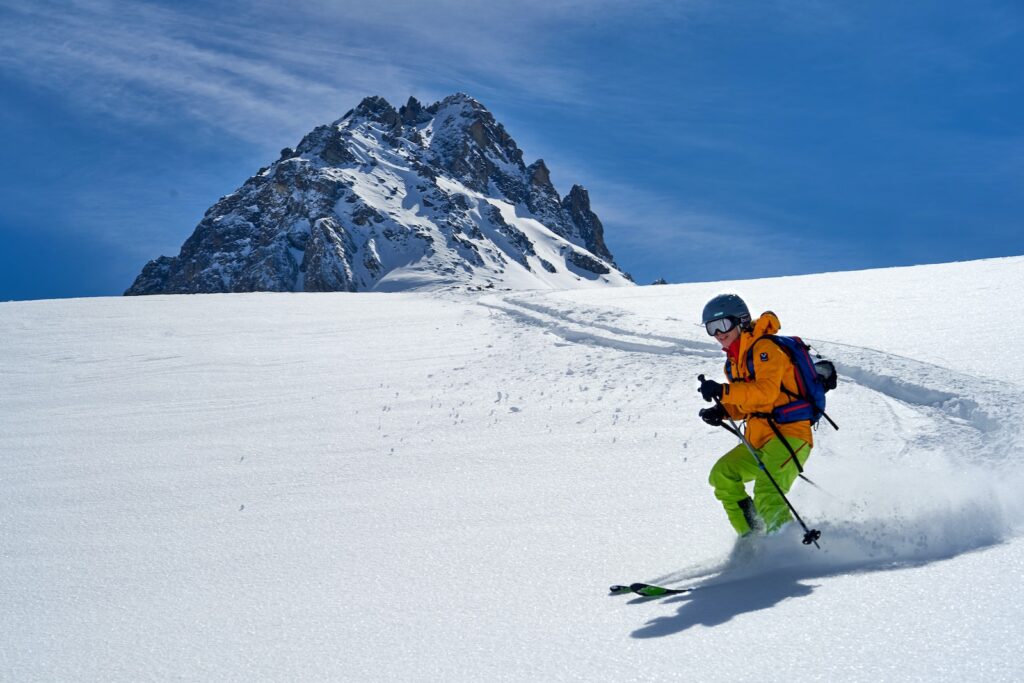
The Debate between Skiing and Snowboarding
Skiing and snowboarding are two popular winter sports that have been in competition with each other for decades. Skiing has a long history, dating back to ancient times when it was used as a mode of transportation in snowy regions. Snowboarding, on the other hand, is a relatively new sport that emerged in the 1960s and gained popularity in the 1980s.
The ongoing debate between skiing and snowboarding revolves around which sport is better, more fun, or easier to learn. Both sports have their own unique characteristics and techniques, attracting different types of individuals. While skiing is often associated with elegance and grace, snowboarding is seen as more rebellious and freestyle-oriented.
The Learning Curve: Which Sport is Easier to Pick Up?
When it comes to learning a new sport, the learning curve is an important factor to consider. Skiing and snowboarding have different techniques and require different skills, making the learning experience unique for each sport.
Skiing involves using two separate skis, one for each foot, and poles for balance and propulsion. The basic technique of skiing involves shifting weight from one ski to the other to initiate turns and control speed. The learning curve for skiing can be steep for beginners, as it requires coordination and balance. However, once the basics are mastered, skiing can be a rewarding and enjoyable sport.
Snowboarding, on the other hand, involves using a single board strapped to both feet. The basic technique of snowboarding involves using body movements to initiate turns and control speed. The learning curve for snowboarding can be challenging for beginners, as it requires balance and coordination in a different way than skiing. However, once the basics are mastered, snowboarding can provide a unique and exhilarating experience on the slopes.
For beginners in either sport, it is important to take lessons from a qualified instructor. They can provide guidance and help develop the necessary skills and techniques. Additionally, practicing on beginner slopes and gradually progressing to more challenging terrain can help build confidence and improve skills.
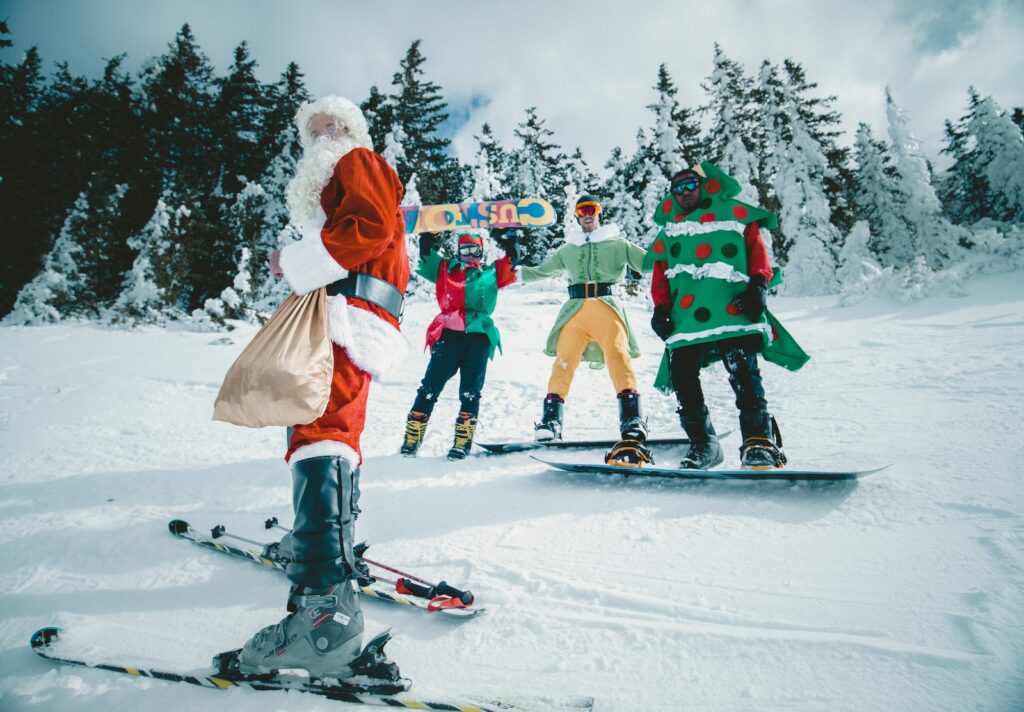
Equipment: What You Need to Know Before Making the Switch
Before making the switch from skiing to snowboarding or vice versa, it is important to understand the differences in equipment between the two sports. Skiing and snowboarding require different types of equipment, and it is essential to have the right gear for each sport.
In skiing, the equipment consists of skis, boots, and poles. Skis come in different lengths and widths, depending on the type of skiing and the individual’s skill level. Ski boots are designed to provide support and control, and they should fit snugly to ensure proper performance. Poles are used for balance and propulsion, and they should be the correct length for the individual’s height.
In snowboarding, the equipment consists of a snowboard, boots, and bindings. Snowboards come in different lengths and widths, depending on the individual’s skill level and riding style. Snowboard boots are designed to provide support and control, and they should fit snugly to ensure proper performance. Bindings are used to secure the boots to the snowboard, and they should be adjusted to the individual’s riding stance.
Before purchasing new equipment, it is important to consider factors such as skill level, riding style, and budget. It is recommended to try out different types of equipment before making a decision, as personal preference plays a significant role in the overall experience. Additionally, renting equipment before making a purchase can be a cost-effective way to try out different options.
The cost of equipment for skiing and snowboarding can vary depending on the brand, quality, and type of equipment. Generally, skiing tends to be more expensive than snowboarding, as it requires more equipment and accessories. However, there are options available for every budget, and it is possible to find affordable and high-quality equipment for both sports.
Technique: The Differences between Skiing and Snowboarding
The techniques used in skiing and snowboarding are different, and it is important to understand the nuances of each sport to improve performance and enjoyment on the slopes.
In skiing, the technique involves using the edges of the skis to initiate turns and control speed. Skiers shift their weight from one ski to the other, using their poles for balance and propulsion. The technique for skiing varies depending on the type of skiing, such as alpine skiing, cross-country skiing, or freestyle skiing. Each type of skiing requires different skills and techniques, and it is important to learn the basics before progressing to more advanced maneuvers.
In snowboarding, the technique involves using body movements to initiate turns and control speed. Snowboarders shift their weight from one edge of the board to the other, using their body and legs to steer and balance. The technique for snowboarding varies depending on the riding style, such as freestyle, freeride, or alpine snowboarding. Each riding style requires different skills and techniques, and it is important to learn the basics before attempting more advanced maneuvers.
To improve technique in skiing and snowboarding, it is important to practice regularly and seek guidance from qualified instructors. They can provide feedback and help identify areas for improvement. Additionally, watching instructional videos and studying the techniques of experienced skiers and snowboarders can provide valuable insights and inspiration.
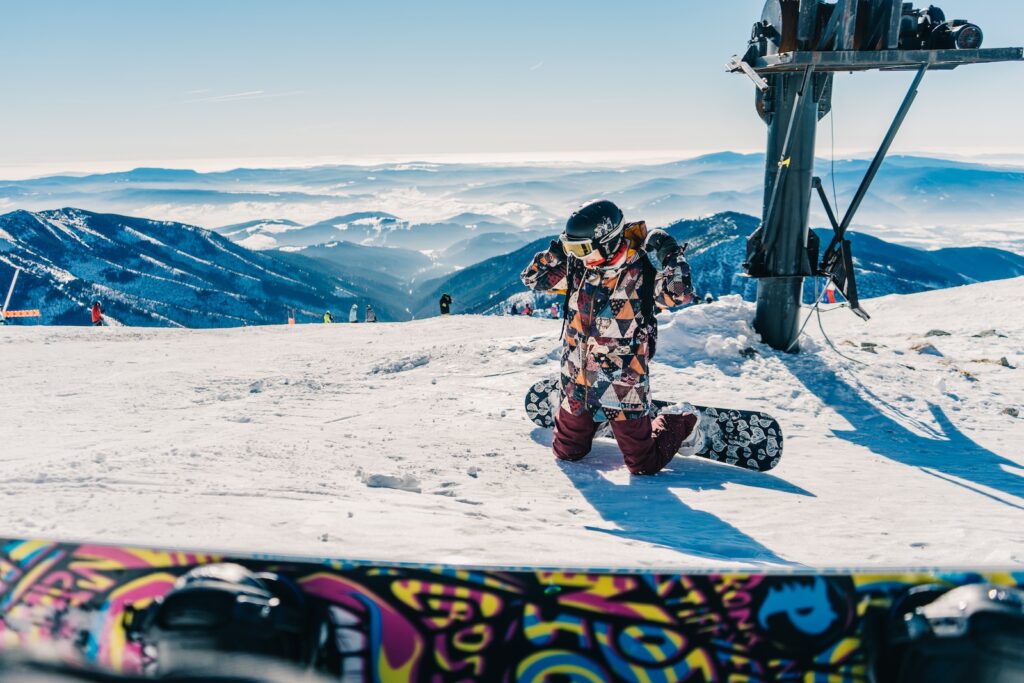
Terrain: Which Sport is Better Suited for Different Conditions?
The types of terrain each sport is best suited for is an important consideration when deciding between skiing and snowboarding. Different types of terrain require different skills and techniques, and it is important to choose a sport that aligns with personal preferences and goals.
In skiing, the sport is well-suited for a variety of terrains, including groomed slopes, moguls, powder, and backcountry. Groomed slopes are smooth and well-maintained, making them ideal for beginners and intermediate skiers. Moguls are bumps formed on the slopes, and they require advanced skills and techniques to navigate. Powder is fresh, untouched snow, and it provides a unique and exhilarating experience for advanced skiers. Backcountry skiing involves exploring unmarked and ungroomed terrain, and it requires specialized equipment and skills.
In snowboarding, the sport is also well-suited for a variety of terrains, including groomed slopes, terrain parks, powder, and backcountry. Groomed slopes are ideal for beginners and intermediate snowboarders, as they provide a smooth and controlled environment. Terrain parks are designed for freestyle snowboarding, with features such as jumps, rails, and halfpipes. Powder provides a unique and challenging experience for advanced snowboarders, as it requires skill and control to navigate. Backcountry snowboarding involves exploring unmarked and ungroomed terrain, and it requires specialized equipment and skills.
To adapt to different terrains in skiing and snowboarding, it is important to practice on a variety of slopes and conditions. This can help build confidence and improve skills in different environments. Additionally, seeking guidance from experienced skiers and snowboarders can provide valuable insights and tips for navigating different terrains.
Safety: Understanding the Risks and How to Stay Safe
Understanding the risks associated with skiing and snowboarding is essential for staying safe on the slopes. Both sports involve inherent risks, and it is important to take precautions and follow safety guidelines to minimize the chances of accidents and injuries.
In skiing, the risks include collisions with other skiers or objects, falls, and overexertion. To stay safe, it is important to ski within one’s ability level and follow the rules and regulations of the ski resort. Wearing a helmet is highly recommended, as it can protect against head injuries. Additionally, it is important to stay hydrated, take breaks when needed, and listen to the body’s signals to prevent overexertion.
In snowboarding, the risks include collisions with other snowboarders or objects, falls, and overexertion. To stay safe, it is important to snowboard within one’s ability level and follow the rules and regulations of the ski resort. Wearing a helmet is highly recommended, as it can protect against head injuries. Additionally, it is important to stay hydrated, take breaks when needed, and listen to the body’s signals to prevent overexertion.
Proper safety equipment is essential for skiing and snowboarding. In addition to a helmet, it is recommended to wear goggles to protect the eyes from wind, snow, and UV rays. Wearing layers of clothing can help regulate body temperature and provide protection against the cold. It is also important to wear gloves or mittens to protect the hands, and to use sunscreen to protect the skin from the sun’s rays.
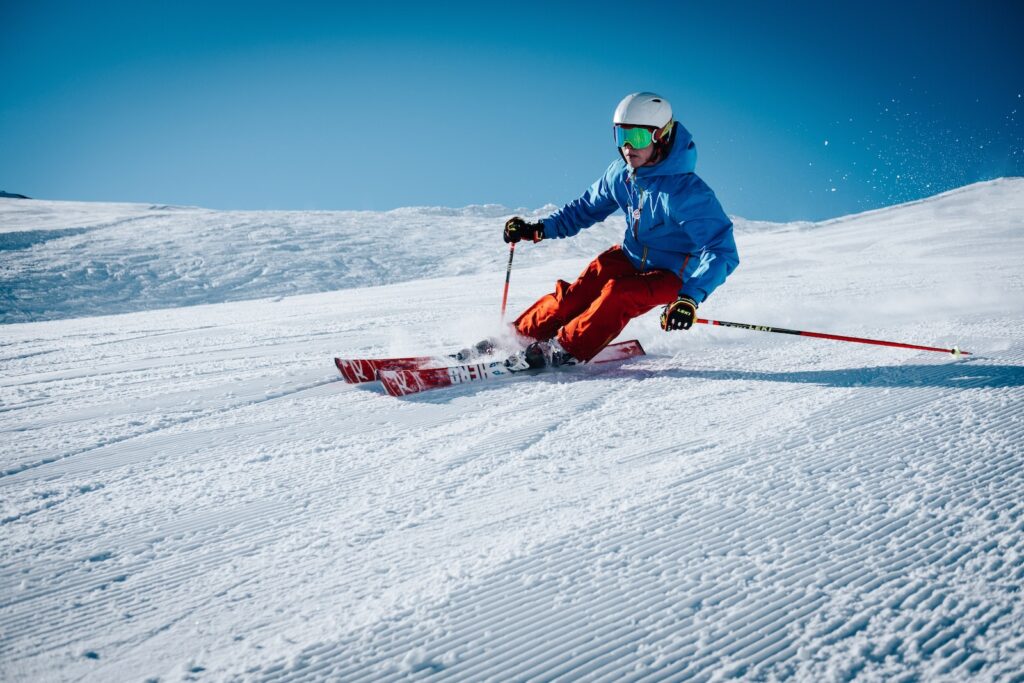
Cost: Comparing the Expenses of Skiing and Snowboarding
The cost of skiing and snowboarding can vary depending on factors such as location, season, and personal preferences. Both sports involve expenses such as lift tickets, lessons, rentals, and equipment.
In terms of lift tickets, skiing tends to be more expensive than snowboarding. Ski resorts often offer different pricing options, such as full-day, half-day, or multi-day passes. Additionally, discounts are often available for children, seniors, and groups. It is recommended to research and compare prices before purchasing lift tickets, as prices can vary significantly between resorts.
In terms of lessons, both skiing and snowboarding require instruction for beginners. Ski resorts offer group lessons, private lessons, and multi-day lesson packages. Group lessons are more affordable, but they may not provide as much individual attention. Private lessons are more expensive, but they offer personalized instruction and can be tailored to individual needs and goals.
In terms of rentals, both skiing and snowboarding require equipment for beginners. Ski resorts offer rental packages that include skis, boots, and poles for skiing, or a snowboard and boots for snowboarding. Rental prices vary depending on the quality and type of equipment, as well as the duration of the rental period. It is recommended to reserve rentals in advance to ensure availability and to take advantage of any discounts or promotions.
In terms of equipment, both skiing and snowboarding require an initial investment. The cost of purchasing new equipment can vary depending on the brand, quality, and type of equipment. Skiing tends to be more expensive than snowboarding, as it requires more equipment and accessories. However, there are options available for every budget, and it is possible to find affordable and high-quality equipment for both sports.
To save money on skiing and snowboarding expenses, it is recommended to plan ahead and take advantage of any discounts or promotions. Many ski resorts offer early bird pricing, season passes, or package deals that include lift tickets, lessons, and rentals. Additionally, renting equipment instead of purchasing can be a cost-effective option, especially for beginners or occasional skiers and snowboarders.
Community: The Culture and Social Scene of Each Sport
The culture and social scene of skiing and snowboarding are unique and diverse, attracting different types of individuals. Both sports have their own communities and subcultures, and it is important to understand and appreciate the culture of each sport.
Skiing has a long history and a rich tradition, and it is often associated with elegance, grace, and sophistication. Skiers are known for their stylish attire, including colorful jackets, pants, and accessories. Ski resorts often have a luxurious and upscale atmosphere, with amenities such as fine dining, spa services, and après-ski activities. The skiing community is diverse and inclusive, welcoming individuals of all ages and skill levels.
Snowboarding, on the other hand, has a more rebellious and freestyle-oriented culture. Snowboarders are known for their laid-back and casual style, often wearing baggy pants, hoodies, and beanies. Snowboard parks and terrain parks are popular among snowboarders, as they provide opportunities for freestyle tricks and jumps. The snowboarding community is known for its camaraderie and sense of adventure, and it attracts individuals who enjoy pushing boundaries and exploring new possibilities.
To get involved in the skiing and snowboarding community, it is recommended to participate in events, competitions, and social gatherings. Ski resorts often host events such as races, freestyle competitions, and festivals. Additionally, joining clubs or organizations dedicated to skiing or snowboarding can provide opportunities to meet like-minded individuals and participate in group activities.
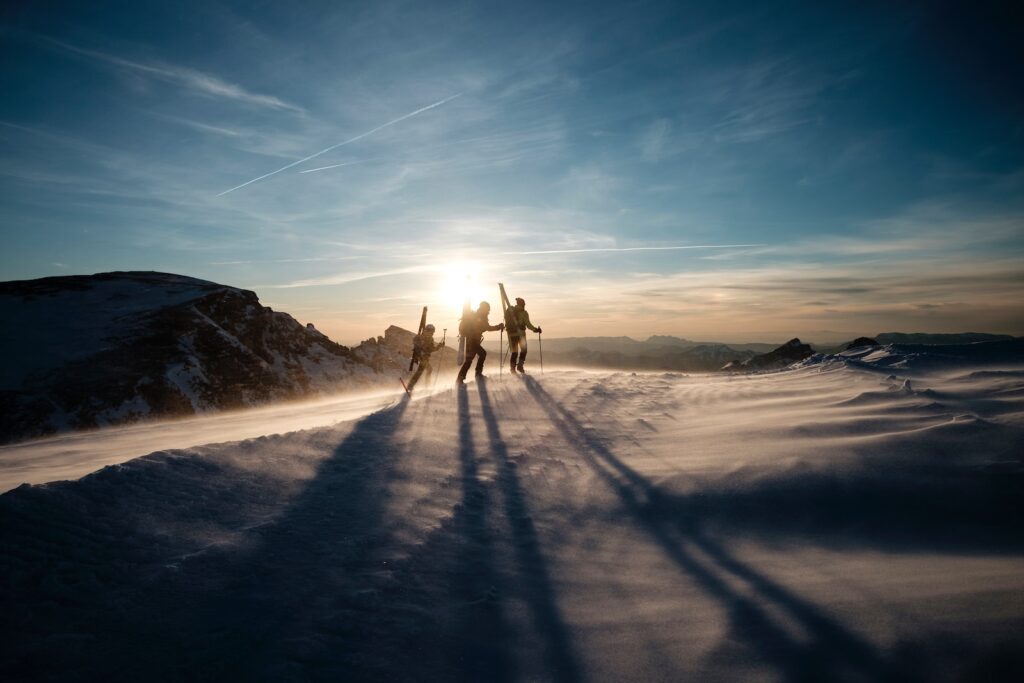
Fitness: The Physical Demands of Skiing and Snowboarding
Skiing and snowboarding are physically demanding sports that require strength, endurance, and flexibility. Both sports engage different muscle groups and provide a full-body workout.
In skiing, the muscles used include the quadriceps, hamstrings, glutes, calves, and core muscles. The quadriceps are engaged when initiating turns and controlling speed, while the hamstrings and glutes are used for stability and balance. The calves are engaged when flexing and extending the ankles, and the core muscles are used for stability and control.
In snowboarding, the muscles used include the quadriceps, hamstrings, glutes, calves, and core muscles. The quadriceps are engaged when initiating turns and controlling speed, while the hamstrings and glutes are used for stability and balance. The calves are engaged when flexing and extending the ankles, and the core muscles are used for stability and control.
To improve fitness for skiing and snowboarding, it is important to incorporate exercises that target the specific muscle groups used in each sport. Strength training exercises such as squats, lunges, and deadlifts can help build leg and core strength. Cardiovascular exercises such as running, cycling, or swimming can improve endurance and stamina. Additionally, flexibility exercises such as yoga or stretching can improve flexibility and prevent injuries.
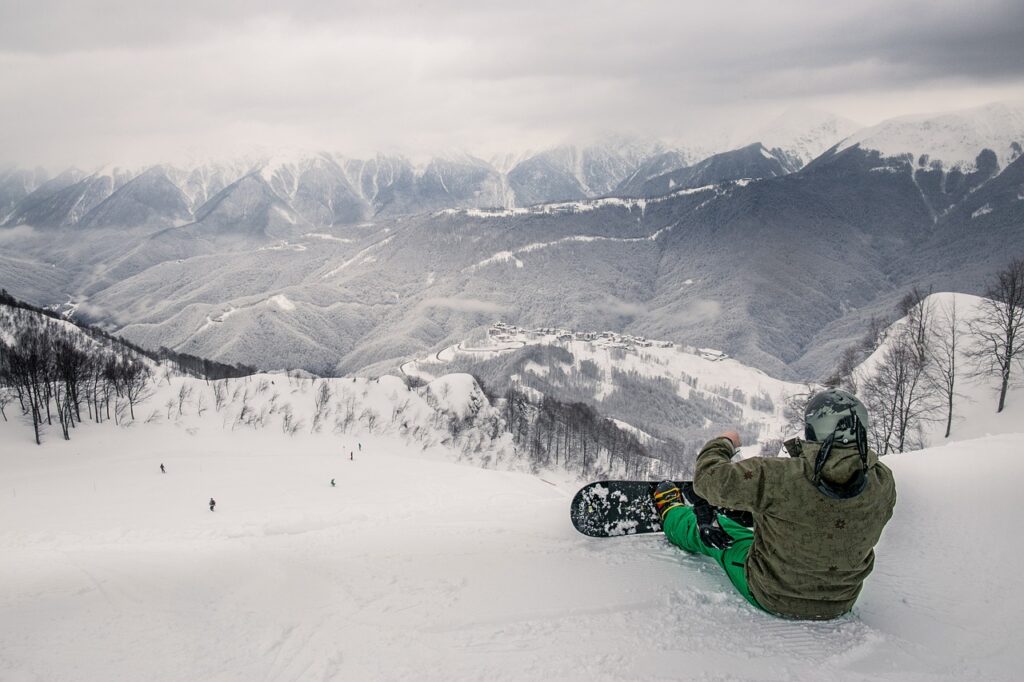
Conclusion: Making the Decision to Switch from Skiing to Snowboarding or Vice Versa
Making the decision to switch from skiing to snowboarding or vice versa is a personal choice that depends on individual preferences, goals, and circumstances. Both sports offer unique experiences and challenges, and it is important to choose a sport that aligns with personal interests and abilities.
Factors to consider when deciding to switch sports include the learning curve, equipment, technique, terrain, safety, cost, community, and fitness. It is important to research and understand the differences between skiing and snowboarding in each of these areas to make an informed decision.
Tips for making a smooth transition include taking lessons from qualified instructors, practicing regularly, and seeking guidance from experienced skiers and snowboarders. Additionally, it is important to have realistic expectations and be patient with the learning process. Switching sports can be challenging at first, but with time and practice, it can be a rewarding and enjoyable experience.
Ultimately, the most important factor to consider when choosing a sport is personal enjoyment. Skiing and snowboarding are meant to be fun and exhilarating,
